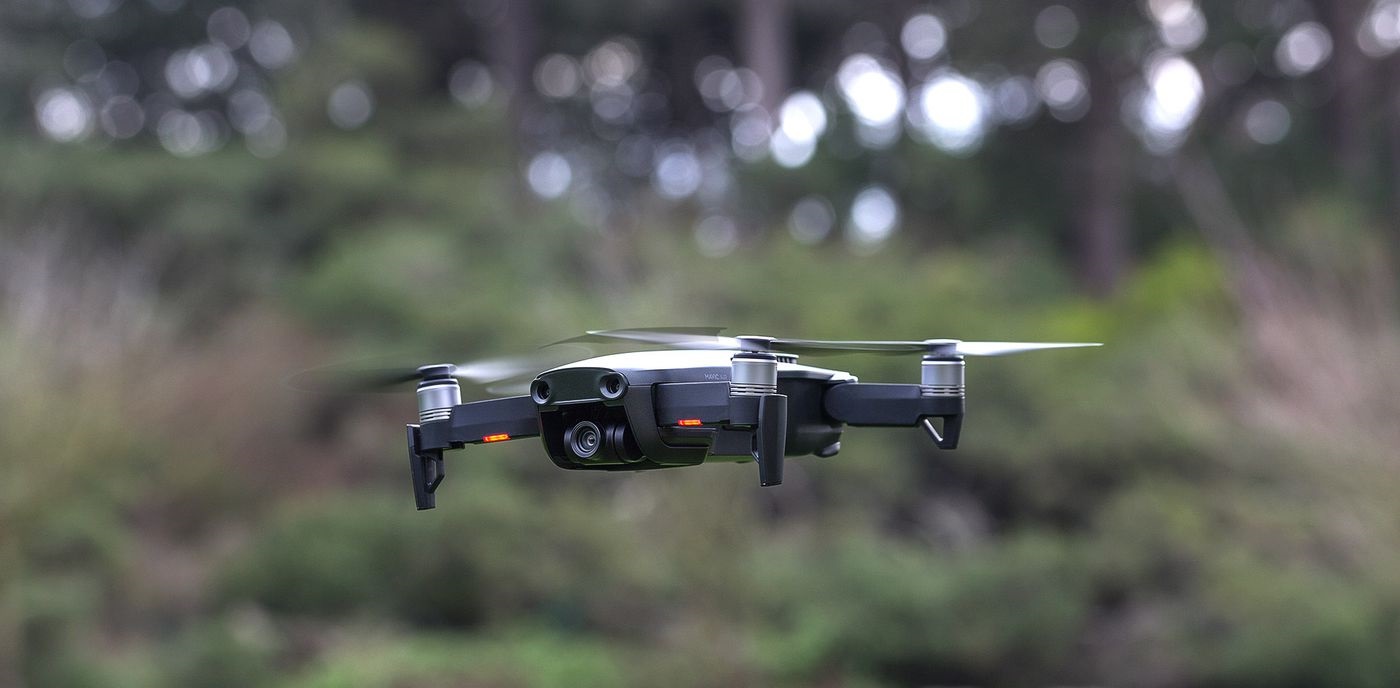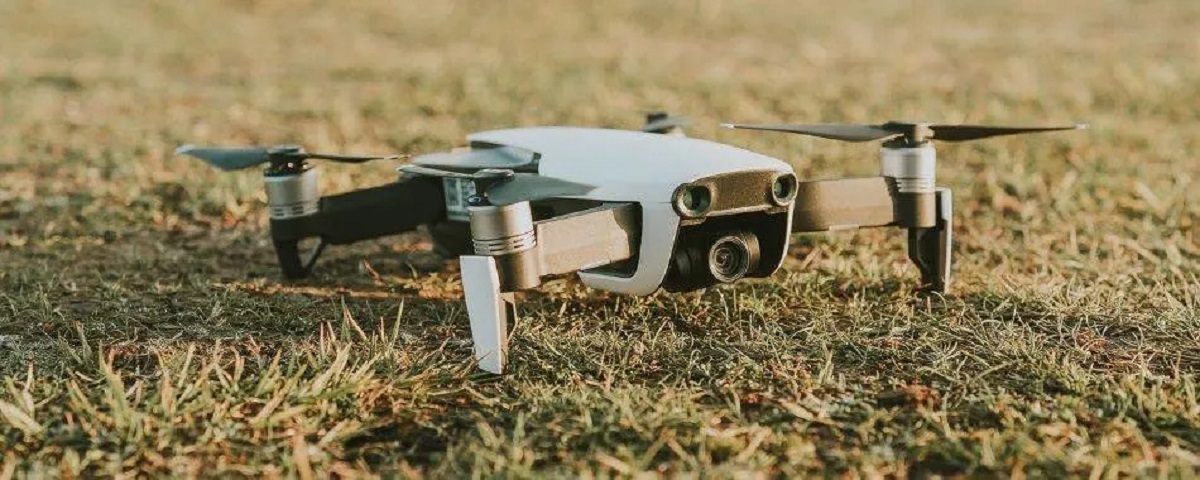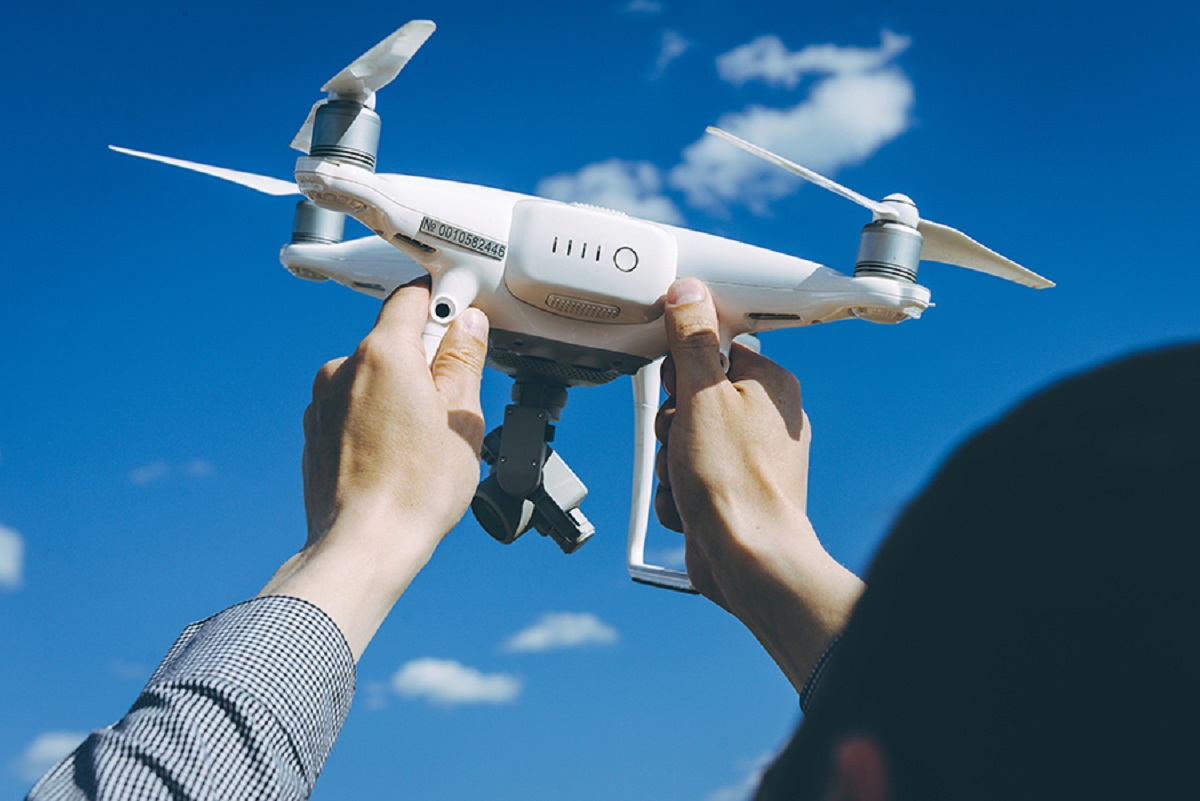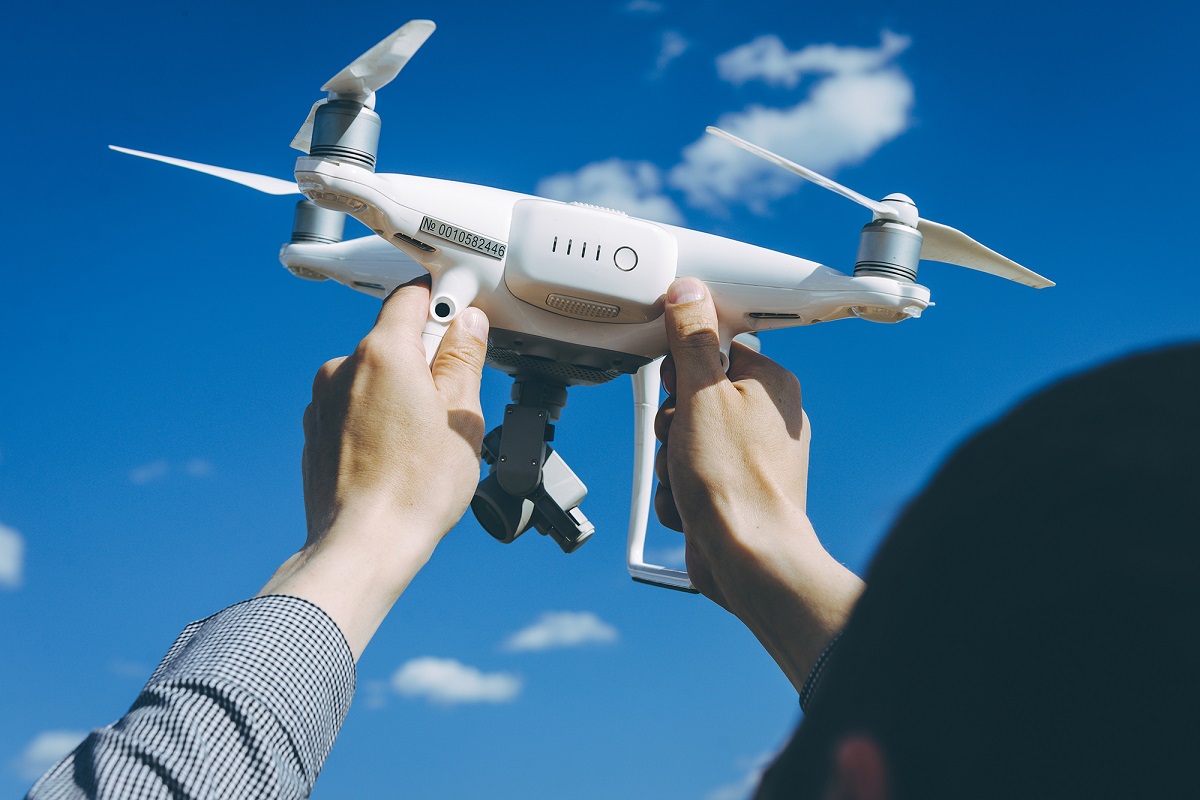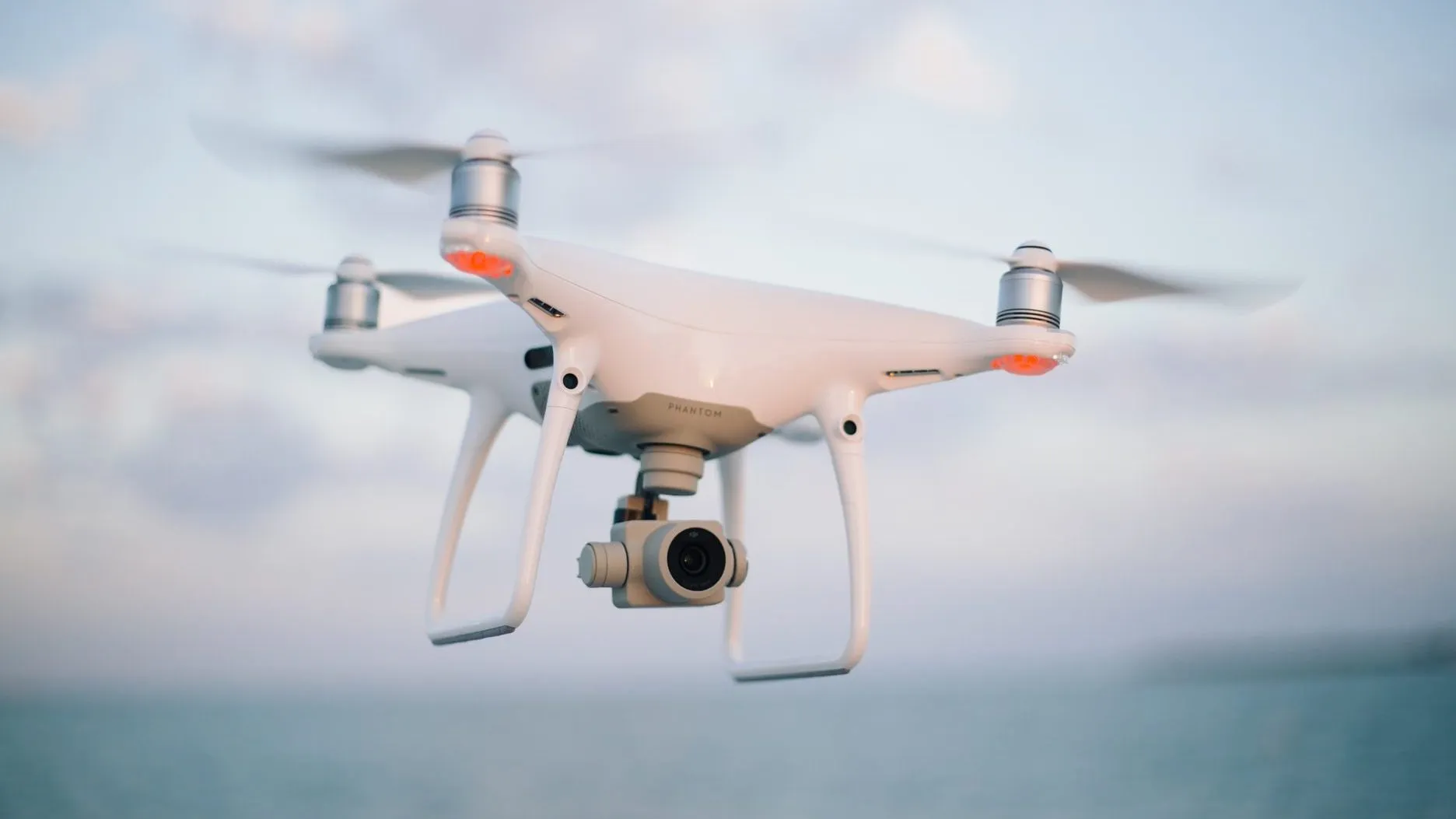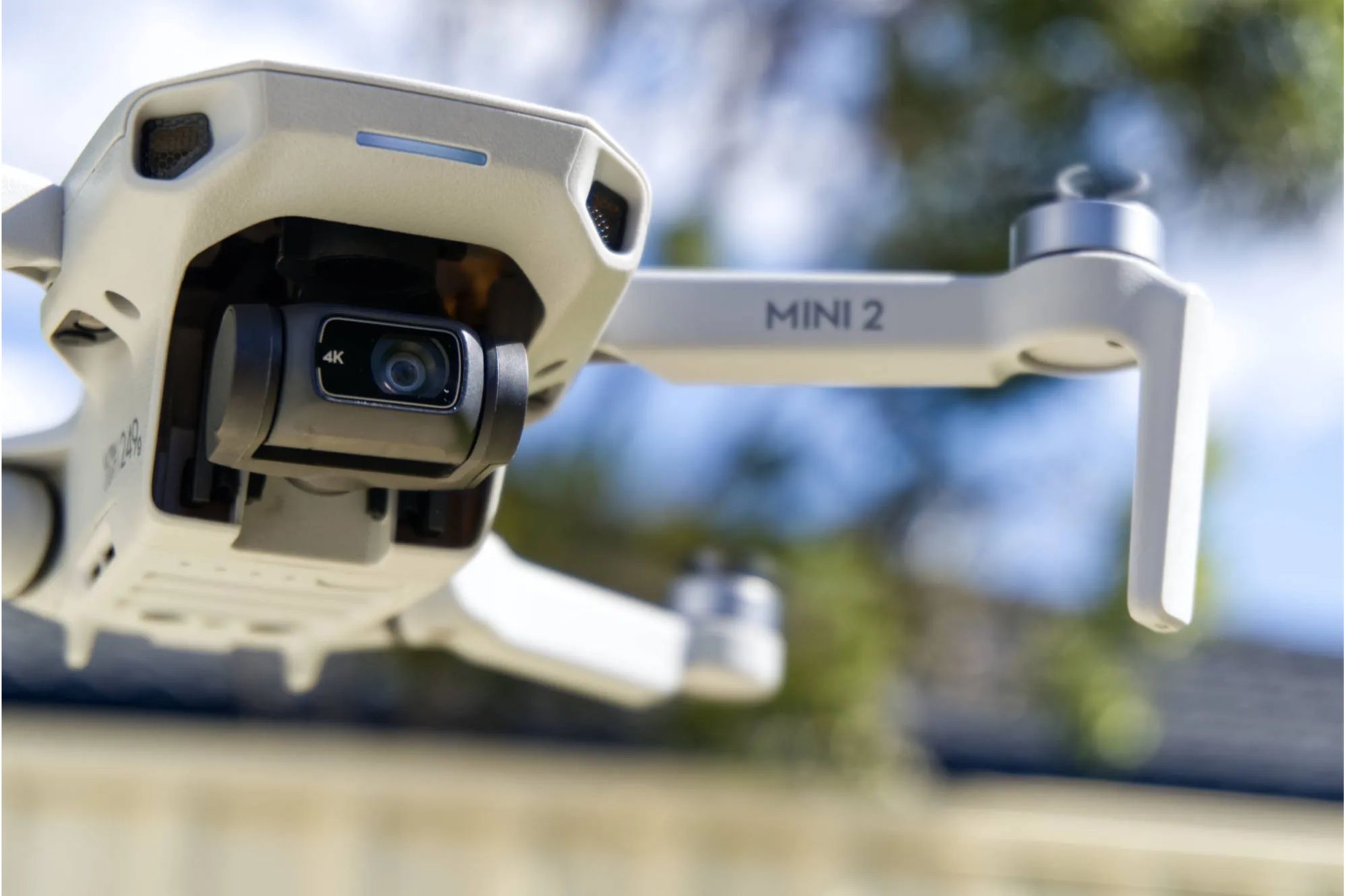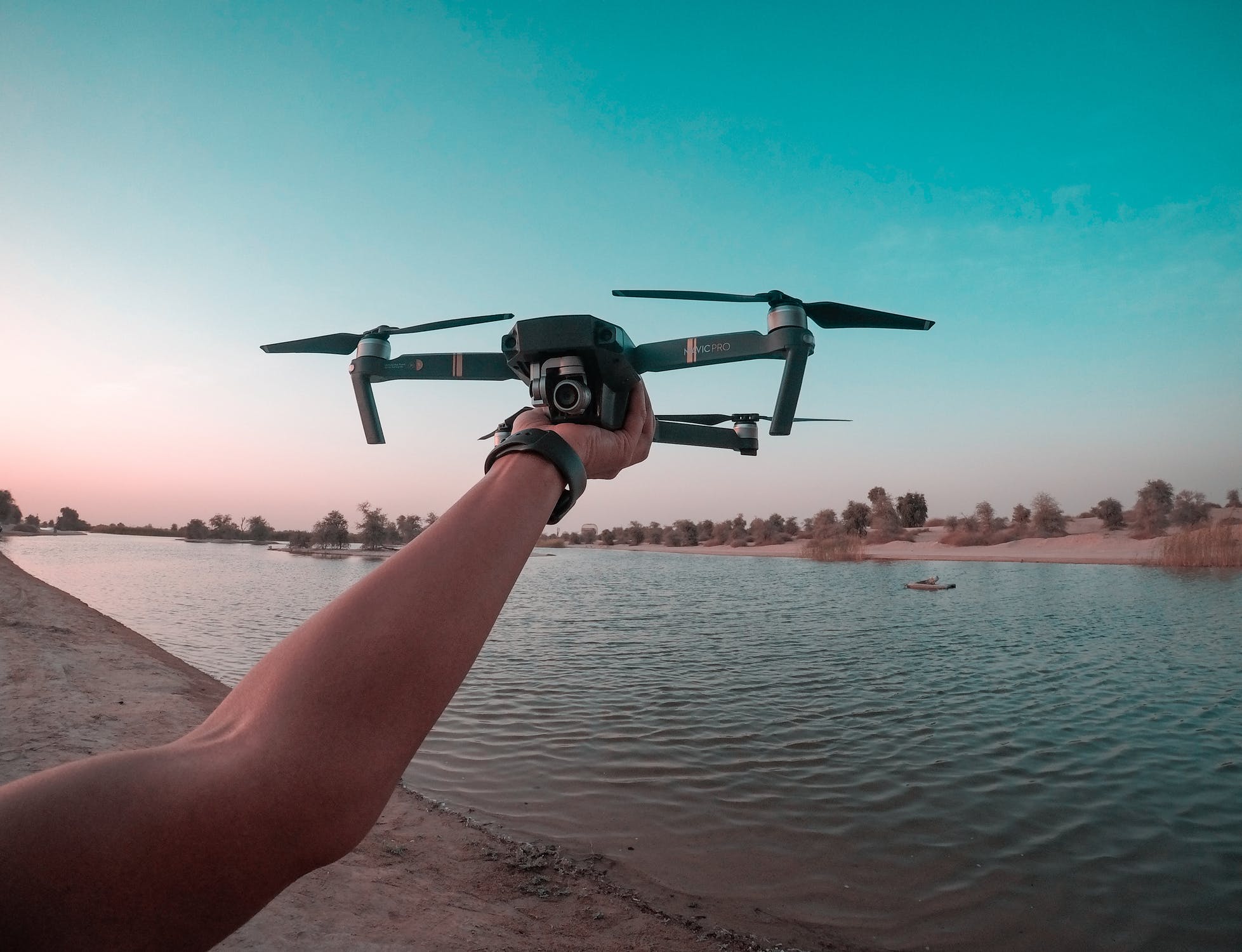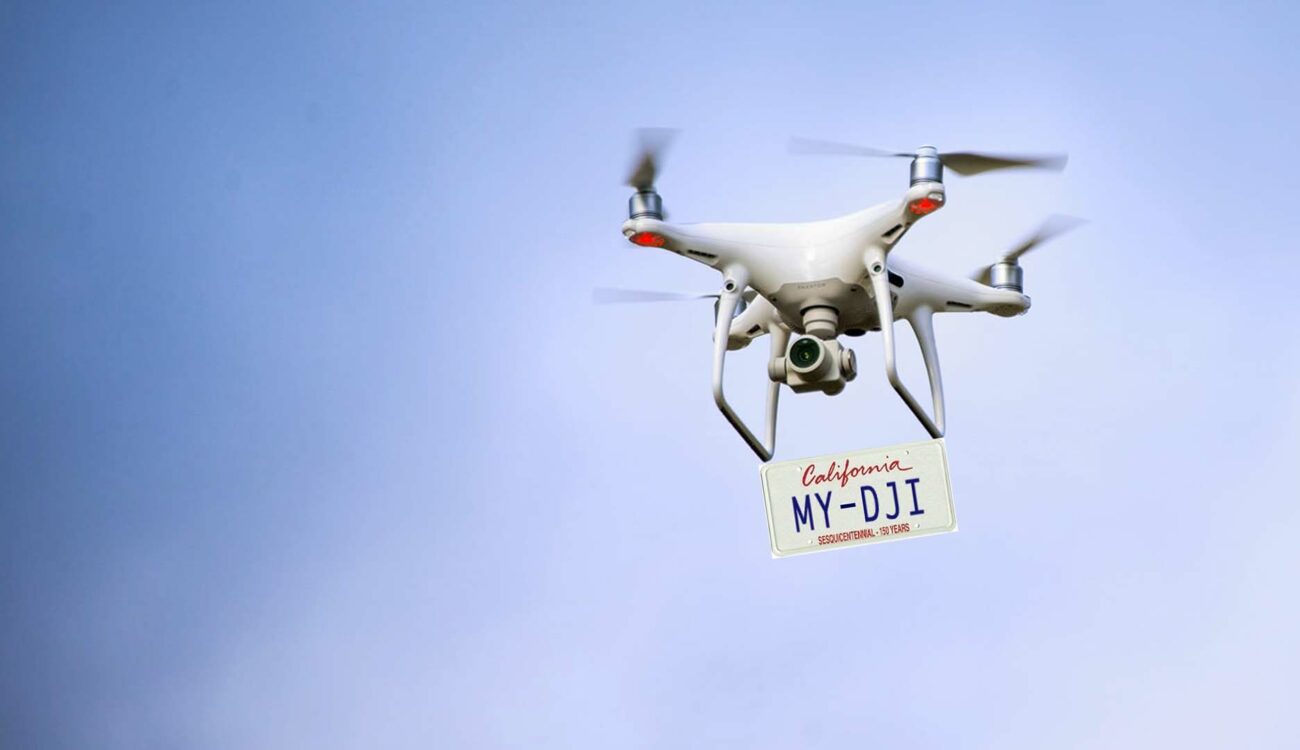Why Registering Your Drone is Important
As drones become increasingly popular, it is important for drone owners to understand the significance of registering their devices. Drone registration involves providing identification and contact information to the appropriate authorities. While it may seem like an additional step or a hassle, drone registration offers several key benefits:
- Legal Compliance: Registering your drone ensures that you are in compliance with the laws and regulations set by your country’s aviation authority. Failure to register your drone can result in fines or other legal consequences.
- Identification: By registering your drone, it can be easily identified in case of loss, theft, or an accident. Having your registration number on your drone allows authorities to trace it back to you as the owner.
- Safety: Registering your drone helps to promote safe practices and responsible drone operation. It emphasizes the importance of understanding and adhering to local airspace regulations, privacy guidelines, and flight restrictions.
- Security: Registration helps authorities to distinguish between legally-operated drones and potential security threats. This aids in maintaining the safety and security of public spaces and sensitive areas.
- Insurance Requirements: Some insurance policies may require drone registration as a condition for coverage. By registering your drone, you ensure that you are eligible for potential insurance benefits in case of any mishaps or accidents.
Overall, registering your drone is a responsible and necessary step to ensure legal compliance, promote safety, and protect yourself as a drone owner. Taking the time to complete the registration process demonstrates your commitment to being a responsible drone operator and contributing to the overall positive reputation of the drone community.
Step 1: Check the Laws and Regulations in Your Country
Before you proceed with the drone registration process, it is essential to familiarize yourself with the laws and regulations governing drone ownership and operation in your country. Each country has specific rules and requirements that drone owners must adhere to, and these can vary significantly.
Start by visiting the website of your country’s aviation authority or civil aviation agency. They usually provide detailed information on drone regulations, including where you can fly, flight restrictions, and any specific requirements for drone registration.
Some key factors to consider when checking the laws and regulations may include:
- Flight Restrictions: Determine if there are any airspace restrictions or designated no-fly zones in your area. These can include airports, military installations, government buildings, and other sensitive locations.
- Operational Limitations: Understand the limitations on drone flight, such as maximum altitude, distance from people or buildings, and daylight operation requirements.
- Licensing or Certification Requirements: Check if you need any specific licenses or certifications to operate your drone legally. Some countries require individuals to complete training programs or obtain specialized certifications before flying.
- Privacy and Data Protection: Familiarize yourself with the privacy laws and guidelines related to drone operations in your country. Ensure that you respect people’s privacy and do not violate any regulations regarding capturing or sharing images or videos.
By understanding the laws and regulations in your country, you can operate your drone safely and legally. It is crucial to regularly keep updated on any changes or amendments to the regulations to ensure ongoing compliance.
Step 2: Determine if Your Drone Needs to be Registered
Once you have familiarized yourself with the laws and regulations in your country, the next step is to determine if your drone needs to be registered. Registration requirements can vary based on factors such as the weight of your drone, its intended use, and your country’s specific regulations.
Typically, countries classify drones into different categories based on their weight, with different rules and registration requirements for each category. For example, in some countries, drones weighing less than 250 grams may be exempt from registration, while larger drones may require registration and may even need to be labeled with a registration number.
To determine if your drone needs to be registered, consider the following:
- Drone Weight: Check the weight limit set by your country’s aviation authority for registration requirements. If your drone falls within the weight range specified, registration may be mandatory.
- Intended Use: Some countries have separate registration requirements for recreational and commercial drone use. Determine the category that best aligns with your intended use and ensure compliance with the corresponding registration process.
- Online Databases: Some countries maintain online databases of registered drones. Check if your drone model is listed in the database, as it may indicate that registration is mandatory.
- Exceptions: Review any exceptions or exemptions that might apply based on certain criteria, such as flying in designated areas or participating in specific activities.
If your drone meets the criteria for registration, it is essential to proceed with the registration process to ensure compliance with the law. Failing to register when required can result in penalties and legal consequences.
However, if your drone falls under the exempted category, it is still advisable to keep documentation related to your drone purchase, including proof of ownership, in case it is requested by authorities during flight operations.
Step 3: Gather the Required Documentation and Information
Before you initiate the drone registration process, it is essential to gather all the necessary documentation and information that may be required. This will help streamline the registration process and ensure you have all the required details readily available.
The exact documentation and information needed can vary depending on your country’s regulations, but here are some common items you may need:
- Identification Documents: Prepare a valid form of identification, such as a driver’s license, passport, or national ID card. Some countries may require a copy or scan of these documents as part of the registration process.
- Drone Specifications: Collect information about your drone, including the manufacturer, model name or number, serial number, and any other relevant details. This information is usually found on the packaging or in the drone’s user manual.
- Purchase Receipt: Keep a copy of the receipt or invoice as proof of ownership. In some cases, you may need to provide evidence of purchase during the registration process.
- Insurance Information: If applicable, gather details about your drone insurance, including the policy number and coverage details. Some countries may require this information for registration.
- Emergency Contact Information: Prepare a list of emergency contact details that can be used in case of incidents or accidents involving your drone. Include your name, phone number, and any other relevant contact information.
- Registration Fee: Depending on your country, there may be a registration fee associated with the process. Ensure you have the necessary funds available to cover the fee, if applicable.
By gathering all the required documentation and information beforehand, you can streamline the registration process and avoid unnecessary delays or complications. Take the time to compile these details accurately, ensuring they are easily accessible when you start the registration process.
Step 4: Choose the Appropriate Registration Method
Once you have gathered all the necessary documentation and information, the next step is to choose the appropriate registration method. The registration process can vary from country to country, offering different options for drone owners to register their devices. Depending on your location, you may have one or more registration methods available to you.
Here are some common registration methods to consider:
- Online Registration: Many countries offer an online registration portal or system where you can complete the registration process electronically. This method is typically fast, convenient, and accessible from anywhere with an internet connection.
- Postal Mail Registration: Some countries may require you to submit your registration application and supporting documents by mail. This method may involve printing out and completing paper forms, attaching the necessary documents, and sending them to the designated address.
- In-Person Registration: In certain cases, you may need to register your drone in person at a designated registration office or authority. This may involve scheduling an appointment, bringing the required documents, and completing the registration process in person.
When choosing the appropriate registration method, consider factors such as convenience, speed, and any specific requirements or limitations set by your country’s aviation authority. Review the guidelines and instructions provided by the authorities to ensure you follow the correct registration method.
Additionally, be mindful of any registration fees that may be associated with the chosen method. Some registration processes may require a fee, which can vary depending on the country and the type of drone being registered. Prepare the necessary payment details or funds, if applicable, to complete the registration process smoothly.
Remember, choosing the appropriate registration method is crucial to ensure that you comply with your country’s regulations and complete the registration process accurately and efficiently.
Step 5: Complete the Registration Process
Once you have chosen the appropriate registration method and gathered all the necessary documentation, it’s time to complete the registration process. Follow the instructions provided by your country’s aviation authority or civil aviation agency to ensure a smooth and successful registration. Here are some general steps to guide you:
- Fill out the Application: Whether it’s an online form, paper application, or in-person registration, carefully fill out all the required fields with accurate information. Double-check for any spelling errors or missing details to avoid delays or complications.
- Attach Supporting Documents: If required, attach copies or scans of the necessary documentation, such as identification documents, proof of ownership, insurance information, and any other relevant materials. Ensure that the attachments are clear and legible.
- Pay the Registration Fee: If applicable, make the necessary payment to cover the registration fee. Follow the specified payment method and provide any required payment details accurately. Keep a record of the payment confirmation for future reference.
- Review and Submit: Before finalizing the registration, review all the provided information for accuracy and completeness. Make any necessary corrections or additions, if allowed. Once you are satisfied with the information, submit the registration application as instructed.
- Confirmation: Depending on the registration process, you may receive a confirmation email, receipt, or a registration certificate. Keep this confirmation in a safe place as proof of registration. It may be required when flying your drone or when requested by authorities.
It’s crucial to follow the registration process diligently and provide accurate information to ensure compliance with the law. Take the time to review the instructions thoroughly and seek clarification if needed. Completing the registration process successfully will grant you the necessary documentation and authority to operate your drone legally.
Step 6: Receive Your Registration Certificate
After completing the drone registration process, you will typically receive a registration certificate or a similar document that serves as proof of your drone’s registration. This certificate is an important document that you should keep with you whenever you fly your drone. Here’s what you need to know about receiving your registration certificate:
Processing Time: Depending on the registration authority and the registration method you chose, the processing time for receiving your certificate may vary. Some countries provide instant digital certificates upon completion of the registration process, while others may take several days or weeks to process and mail your certificate.
Email Confirmation: If you completed the registration online, you may receive an email confirmation that includes your registration certificate as a PDF attachment. Make sure to save this email and download a copy of the attachment for your records. You can also print a physical copy and keep it with you as proof of registration.
Physical Certificate: In some cases, particularly if you registered via mail or in-person, you may receive a physical registration certificate by mail. This certificate may be sent to the address you provided during the registration process. Ensure that the address you provided is accurate and current to avoid any delivery issues.
Verify the Certificate: Upon receiving your registration certificate, verify that all the information on it is correct. Check that your name, drone details, and registration number match the information you submitted during the registration process. If you notice any discrepancies, contact the registration authority to rectify the issue.
Validity Period: Some registration certificates may have an expiration date or a validity period. Take note of the expiration date and make sure to renew your registration before it expires to continue flying your drone legally.
Remember to carry your registration certificate with you whenever you fly your drone. It acts as proof of your compliance with the law and can be requested by authorities if needed. Store the certificate in a safe place to avoid damage or loss.
Step 7: Attach Your Registration Number to Your Drone
Once you have received your drone registration certificate or a unique registration number, it is important to attach this information to your drone. This step helps identify your drone in case of loss, theft, or any incidents that may require tracing its owner. Here’s how to attach your registration number to your drone:
Labeling Method: Check the regulations provided by your country’s aviation authority regarding how you should label your drone. Some authorities may require you to affix a label or sticker with your registration number on the drone itself, while others may allow you to write or engrave the number directly on the drone’s body or battery compartment.
Label Location: Review the regulations to determine where the registration number should be placed on your drone. It is typically recommended to place the label in a visible location, such as on the body of the drone or on the battery, where it can be easily seen and identified. Ensure that the label is securely attached and won’t easily come off during flight.
Size and Legibility: Pay attention to any guidelines regarding the size and legibility of your registration number. The number should be clearly visible and readable, even from a distance. Use a font size and style that ensures easy identification without obstructions or fading over time.
Photograph or Record: Take a photograph or record the placement of your registration number on your drone as documentation. This can serve as evidence of your compliance with the registration requirements, should you ever need to prove it.
Adhere to Regulations: It’s important to adhere to any additional regulations or guidelines regarding marking or identification that apply to your drone. Some countries or regions may have specific requirements for professional or commercial drones, such as the need for additional identification markings.
By attaching your registration number to your drone, you are demonstrating your commitment to following the regulations and being a responsible drone owner. It contributes to the overall safety and accountability of the drone community.
Step 8: Renew Your Drone Registration as Required
Registering your drone is not a one-time process. Many countries have specific renewal requirements to ensure that your drone’s registration remains valid and up to date. It is crucial to understand and follow the renewal guidelines set by your country’s aviation authority. Here’s how to renew your drone registration:
Renewal Period: Check the renewal period specified by your country’s regulations. It may be an annual renewal or required at specific intervals, such as every two years. Mark your calendar to remind yourself of the renewal deadline to avoid any lapses in registration.
Reminder Notices: Some registration authorities may send out reminder notices or emails when your renewal is due. However, it is ultimately your responsibility to keep track of the renewal date and initiate the renewal process in a timely manner.
Renewal process: Review the renewal process provided by the registration authority. It may involve submitting an online form, updating your information, and paying any applicable renewal fees.
Update Information: Take the opportunity to update any necessary information during the renewal process. Ensure that your contact details, drone specifications, and any other relevant information are up to date.
Payment of Renewal Fees: Be prepared to pay any required renewal fees. The fees may vary depending on your country and the type of drone you own. Keep a record of the payment confirmation for your reference.
Confirmation: After completing the renewal process, you may receive a confirmation email or updated registration certificate. Review the details provided and store the confirmation for your records.
By renewing your drone registration as required, you maintain your legal compliance and demonstrate your commitment to responsible drone ownership. Failure to renew your registration within the specified timeframe may result in penalties or the loss of your drone’s legal status.
Make sure to set reminders and establish a system to stay updated on your drone registration renewal. This will help ensure that you can continue to enjoy flying your drone legally and responsibly.
Tips for Keeping Your Drone Registration Up to Date
Keeping your drone registration up to date is essential to ensure legal compliance and enjoy uninterrupted drone flying. Here are some tips to help you stay on top of your drone registration:
Set Reminders: Use digital calendars, smartphone apps, or other reminder tools to set alerts for your drone registration renewal date. Regularly check these reminders to ensure you don’t miss any deadlines.
Bookmark Relevant Websites: Bookmark the websites of your country’s aviation authority or civil aviation agency that provide information about drone registration. Regularly visit these sites to stay informed about any changes in the registration process or requirements.
Join Drone Communities: Engage with drone communities or forums where fellow drone enthusiasts share information and updates about drone regulations. Take part in discussions and stay connected with other drone pilots to stay informed about any changes or developments related to drone registration.
Follow Social Media Accounts: Follow the social media accounts of aviation authorities or relevant government agencies that share updates about drone regulations. They often post announcements or reminders regarding drone registration and any changes in the law.
Attend Workshops or Webinars: Look for workshops or webinars organized by aviation authorities or drone associations that focus on legal compliance, drone registration, and other regulatory topics. These events often provide the latest information and guidance to help you keep your drone registration up to date.
Stay Informed About Local Regulations: Alongside monitoring national regulations, stay updated on any local regulations or bylaws that might affect drone operations in your area. Some localities may have additional requirements or restrictions that you need to be aware of.
Keep a Copy of Documents: Make digital copies or scans of your drone registration certificate, receipts, and any other related documentation. Store them securely in the cloud or on a physical storage device as a backup. This will help in case you need to provide proof of registration in the future.
Update Your Information Promptly: If there are any changes to your contact information, drone specifications, or other relevant details, update them promptly with the registration authority. Keeping your information current ensures effective communication and compliance with regulations.
By following these tips, you can stay informed, organized, and up to date with your drone registration. Regularly reviewing and renewing your registration will help you avoid any legal issues and ensure a smooth and enjoyable drone flying experience.
Conclusion
Registering your drone is an important step in becoming a responsible and law-abiding drone owner. It ensures that you comply with the regulations set by your country’s aviation authority and promotes safe and responsible drone operation. By following the steps outlined in this guide, you can navigate the drone registration process successfully:
First, check the laws and regulations in your country to understand the requirements for drone ownership and operation. Determine if your drone needs to be registered based on its weight and intended use. Then, gather the required documentation and information, such as identification documents, drone specifications, and proof of ownership. Choose the appropriate registration method, whether it’s online, mail, or in-person registration.
Complete the registration process accurately and pay any applicable fees. Once your registration is approved, you will receive a registration certificate or a unique registration number. Attach this information to your drone as required by your country’s regulations.
Remember to renew your drone registration on time to ensure its ongoing validity. Set reminders, stay informed about any changes or updates, and follow the renewal process as instructed by your country’s aviation authority.
By keeping your drone registration up to date and complying with the regulations, you contribute to the safety, security, and positive reputation of the drone community. Enjoy flying your drone responsibly, following the guidelines and respecting the privacy and safety of others. Stay informed about any changes in regulations and continue to educate yourself on best practices for drone operation.
Flying a drone can be a rewarding and exhilarating experience, but it’s important to remember that it carries certain responsibilities. By registering your drone and adhering to the rules and regulations, you can enjoy the thrill of flight while contributing to the overall safety and integrity of the drone industry.







